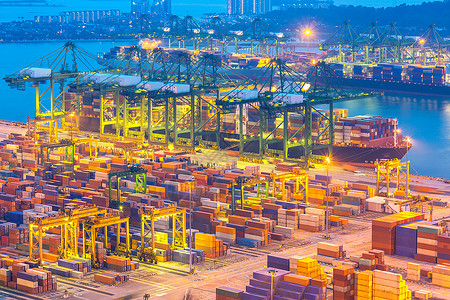未来6个月集装箱航运将迎来两位数的运力注入,越来越多的集装箱航运公司将从他们的船舶共享联盟中独立运营,船上的更多舱位将需要填补。
不仅仅是集装箱现货运价保持在低位,我们熟悉的产能过剩动态与以往的经济下行周期所面临的环境也不同。7月份现货价格略有上涨,这可能反映了货运量的上升和运力的一些收紧,然后更多更大的船舶在下半年下水。

根据标准普尔全球旗下的PIERS数据表示,4月至6月,美国从亚洲的进口量略高于2019年大流行前的水平,但年初至今至6月,总进口量仍比四年前同期减少3万标准箱,比创纪录的2022年上半年减少240多万标准箱。今年6月,东向跨太平洋的货运量达到了年初至今的一个月高点140万标准箱,而2019年6月为148万标准箱。
Matson Navigation董事长兼首席执行官马特•考克斯Matt Cox表示,最近亚洲-美国贸易的部署能力有所改善,跨太平洋市场在向更正常的消费需求和零售库存水平过渡,贸易动态或将在今年剩余时间内逐步改善。
更多的集装箱容量即将推出
根据Sea-Intelligence6月份的数据显示,航空公司取消了占亚洲-北美运力10.6%的航班,但到7月底,航空公司将加快这一步伐,通过取消航班减少了17.8%的可用运力。由于航运公司更好地将运力与需求相匹配,且货运量有所上升,与该行业的总船队相比,集装箱班轮的缺货程度正在缓解。
尽管承运人在3月至6月期间取消了更多的运力,但停航、巴拿马运河的吃水限制以及稳步增加的进口量正在对推高现货汇率产生累积影响,随着月份的进展,海运公司更倾向于增加运力。
根据最新的Sea-Intelligence Maritime Analysis的数据报告显示,海运公司将向连接亚洲和北美的航线注入更多运力。到8月的第四周,跨太平洋集装箱船船队的总运力将同比增长19.2%;到9月初,亚洲和北美之间的船舶空间将以两位数的百分比增长率增长,同比增长将达到10%到9月11日为止是25.2%。
这些航空公司在没有联盟合作伙伴的情况下运营越来越多的运力,集装箱航运公司不得不调整自己的网络,以应对需求的减少,暂停服务,取消航行,增加新的港口停靠,减少航行频率,降低航行速度。
货代网